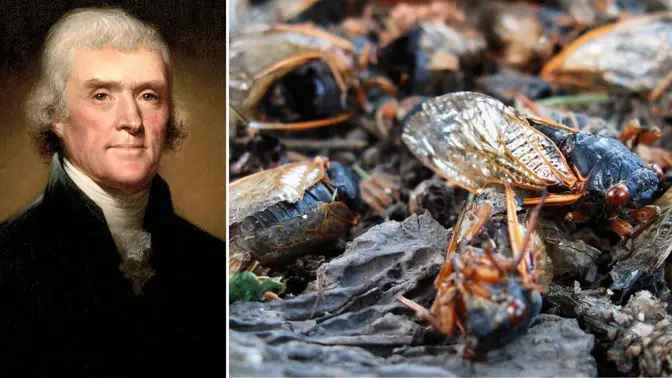Health
January 1, Unprecedented 221-Year Rare Phenomenon Strikes 17 States

This April, a rare natural phenomenon will take place in 17 U.S. states for the first time since 1803. Billions, if not trillions, of noisy flying insects known as cicadas will emerge from underground. They will commence a mating frenzy that lasts several weeks before dying near trees. However, not before laying eggs on forest floors, allowing the cycle of life to begin anew.
For the first time in 221 years, two types of cicadas – brood XIX and XIII – are set to rise from the ground together. This event is not expected to happen again until 2244. These one to two-inch-long bugs have sturdy bodies, bulging compounded red eyes, and membranous wings with a three-inch wingspan.
The Environmental Protection Agency states that cicadas are not harmful to humans, pets, household gardens, or crops. They are a valuable food source for birds and mammals, can aerate lawns, improve water filtration into the ground, and add nutrients to the soil as they decompose.
Cicada expert John Cooley informed that “the co-emergence of any two broods of different cycles is rare, because the cycles are both prime numbers.” He further explained that “any given 13 and 17-year broods will only co-emerge once every 13 x 17 = 221 years.”
Brood XIII cicadas appear on a 17-year cycle in northern Illinois, eastern Iowa, southern Wisconsin, and a few counties in extreme northwestern Indiana. Brood XIX emerges on a slightly shorter 13-year cycle in 15 states, from Alabama to Virginia. The two broods together span parts of 17 states.
During the cicadas’ emergence, Cooley says, “you cannot possibly be unaware that periodical cicadas are out, because they’re out by the millions and millions, and they’re noisy, charismatic, active insects that are just everywhere.” The EPA warns that cicadas can be dangerous to young trees, as they lay their eggs in small tree branches, potentially harming the tree. The agency advises covering maturing saplings in mesh or netting to keep the insects out.
As our loyal readers, we encourage you to share your thoughts and opinions on this issue. Let your voice be heard and join the discussion below.

-

 Entertainment2 years ago
Entertainment2 years agoWhoopi Goldberg’s “Wildly Inappropriate” Commentary Forces “The View” into Unscheduled Commercial Break
-

 Entertainment2 years ago
Entertainment2 years ago‘He’s A Pr*ck And F*cking Hates Republicans’: Megyn Kelly Goes Off on Don Lemon
-

 Featured2 years ago
Featured2 years agoUS Advises Citizens to Leave This Country ASAP
-

 Featured2 years ago
Featured2 years agoBenghazi Hero: Hillary Clinton is “One of the Most Disgusting Humans on Earth”
-

 Entertainment1 year ago
Entertainment1 year agoComedy Mourns Legend Richard Lewis: A Heartfelt Farewell
-

 Featured2 years ago
Featured2 years agoFox News Calls Security on Donald Trump Jr. at GOP Debate [Video]
-

 Latest News1 year ago
Latest News1 year agoNude Woman Wields Spiked Club in Daylight Venice Beach Brawl
-

 Latest News1 year ago
Latest News1 year agoSupreme Court Gift: Trump’s Trial Delayed, Election Interference Allegations Linger